Raspberries
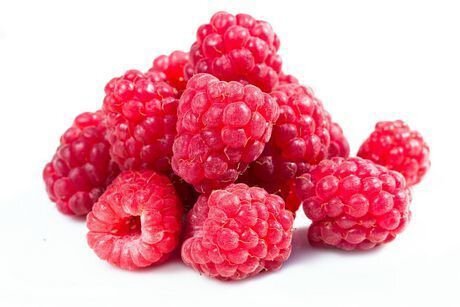
Raspberries may be beloved for their sweet-tart flavor and soft, clustered form, but they’re far from alone in the berry patch. Scattered across forests, gardens, and countryside trails are other fruits that echo the raspberry’s appeal—whether in texture, color, or taste. Some are close botanical cousins, while others just happen to look and feel like raspberries in disguise.
From vibrant red thimbleberries to the honeyed glow of cloudberries, let’s take a look at the fruits that carry a hint of raspberry magic in their own unique way.
1. Salmonberry
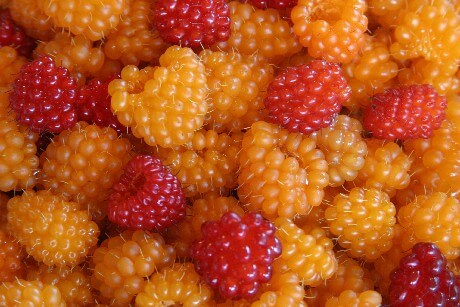
At first glance, a salmonberry might seem like a sunlit raspberry. It has the same structure—tiny clustered drupelets—but glows in shades of gold, orange, and even salmon pink. Native to the Pacific Northwest, its flavor is milder and more watery than raspberries, but the visual resemblance is striking.
2. Cloudberry
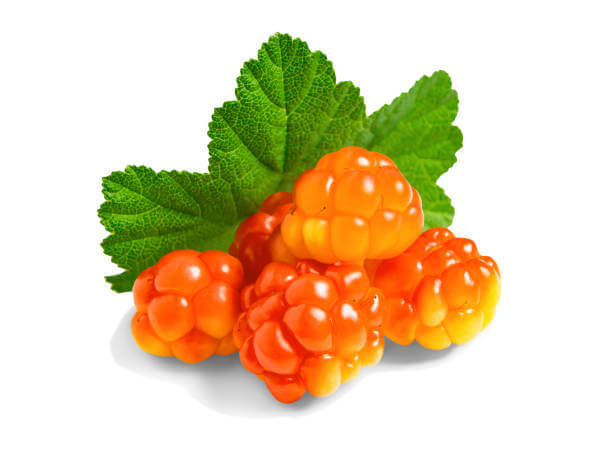
Imagine a golden raspberry that grew up in the Arctic. Cloudberries are soft and juicy, with a honey-sweet taste and a structure nearly identical to raspberries. Their bright amber hue sets them apart, but bite into one and you’ll feel that familiar burst of tart-sweet joy.
3. Wineberry (Rubus phoenicolasius)
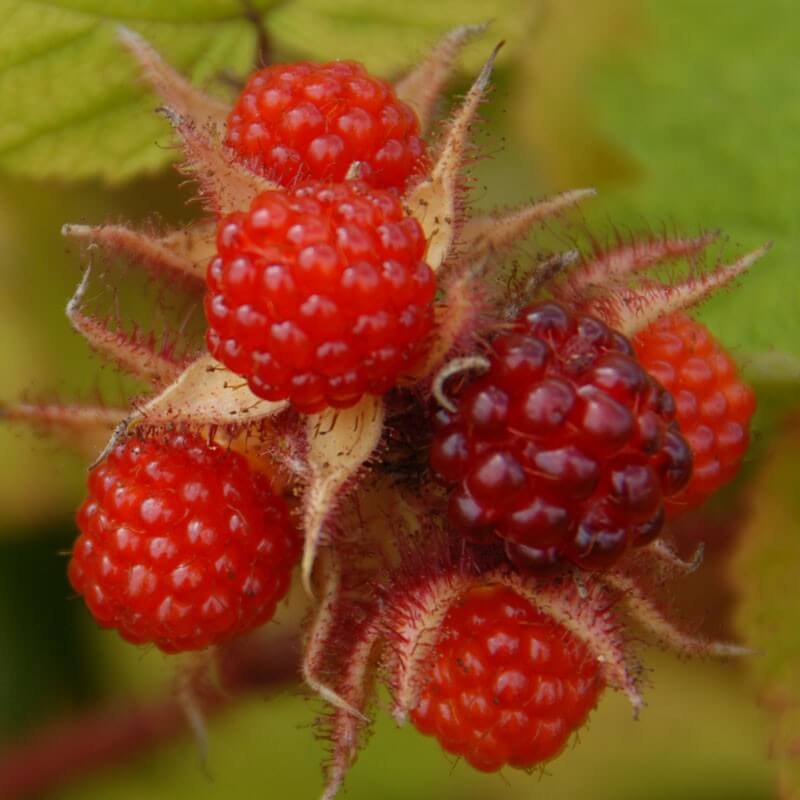
Wineberries look so much like raspberries that you’d need to be told twice. Their glossy red hue and sweet-tart taste are nearly identical. The only giveaway? Their slightly stickier texture and the tiny hairs that cover the fruit. Found wild in many regions, they’re a delicious dopplegänger.
4. Loganberry
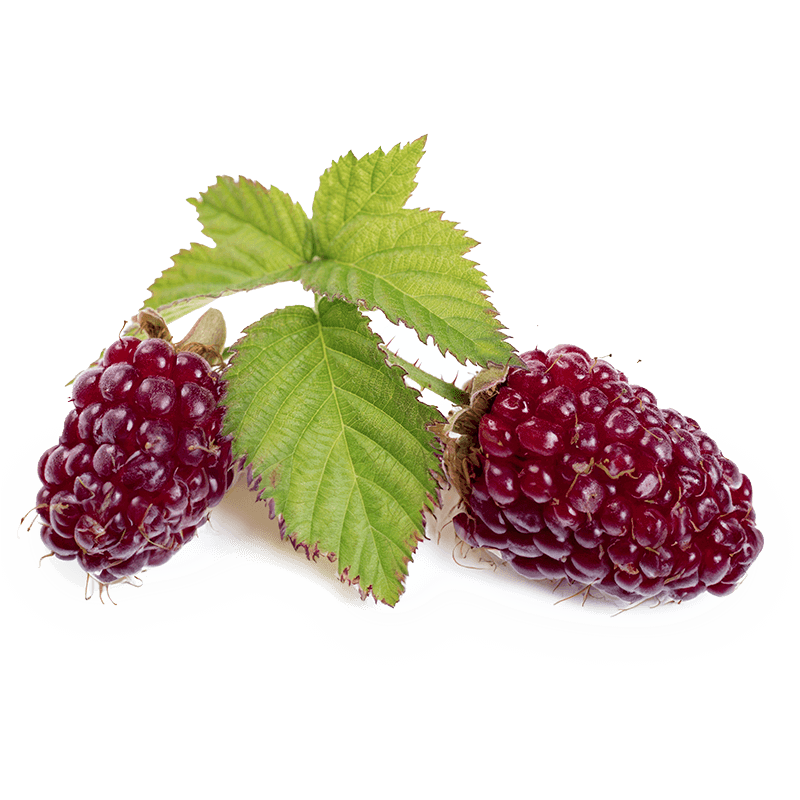
Part raspberry, part blackberry, the loganberry is the result of a happy accident. Its deep red hue and elongated shape give away its blackberry roots, but its tartness and texture lean heavily into raspberry territory. A fusion fruit that brings the best of both.
5.Thimbleberry
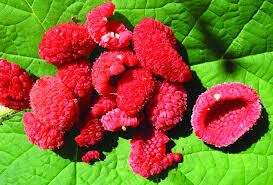
The thimbleberry looks like a flatter, more fragile raspberry. It’s extremely soft, more velvety than juicy, and often crumbles to the touch. What it lacks in shelf life it makes up for in flavor—tart, fragrant, and intensely berry-like. The plant’s large leaves and bold flowers also make it stand out in the wild.
6. Dewberry
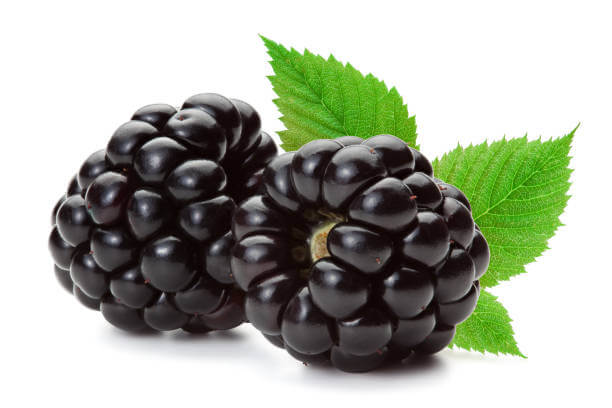
Dewberries often resemble black raspberries or small blackberries. Their flavor is sweet and earthy, and they grow close to the ground on trailing vines. While their color and taste shift from tart red to deep purple-black as they ripen, the structure remains close to that of raspberries.
7. Mulberry
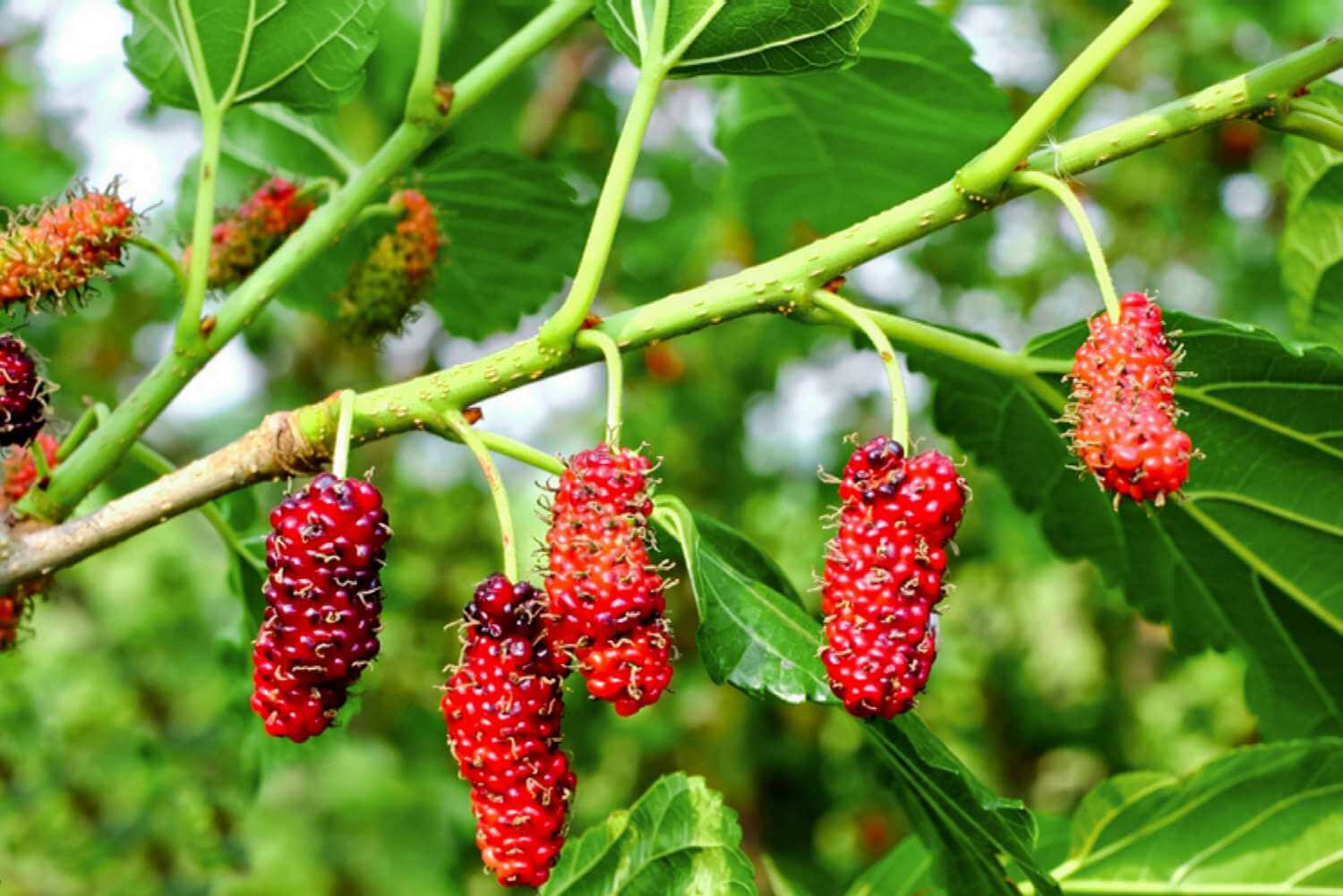
Mulberries look like long, stretched-out raspberries or blackberries. They grow on trees rather than bushes and can be red, purple, or white. While their texture is a little denser and juicier than raspberries, they share the same clustered drupelet form and berry burst flavor.
8. Strawberry

Though strawberries aren’t structurally the same as raspberries, they’re close cousins in flavor and function. Sweet, juicy, and full of summery charm, strawberries work wherever raspberries shine—desserts, jams, fresh eating. Their seeds are on the outside, but the juicy red appeal is very much shared.
9. Tayberry
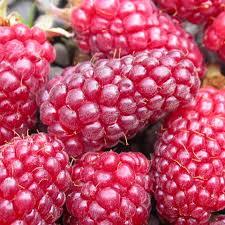
The tayberry is another raspberry-blackberry hybrid, longer and juicier than most raspberries but still draped in that signature red-purple hue. Its taste is a mix of both parents—sweeter than raspberries, but with the body of a blackberry. If raspberries had a bolder sibling, this would be it.
Parting Thoughts
Raspberries have an extended family of look-alikes and taste-alikes, from the frosty cloudberry of the North to the jam-ready thimbleberries of the forest floor. Each of these fruits mirrors something we love about raspberries—be it the shape, flavor, or sheer delight of popping one in your mouth.
Whether you’re foraging in the wild or strolling through a farmer’s market, keep an eye out. You might just discover a raspberry twin waiting to surprise you.
